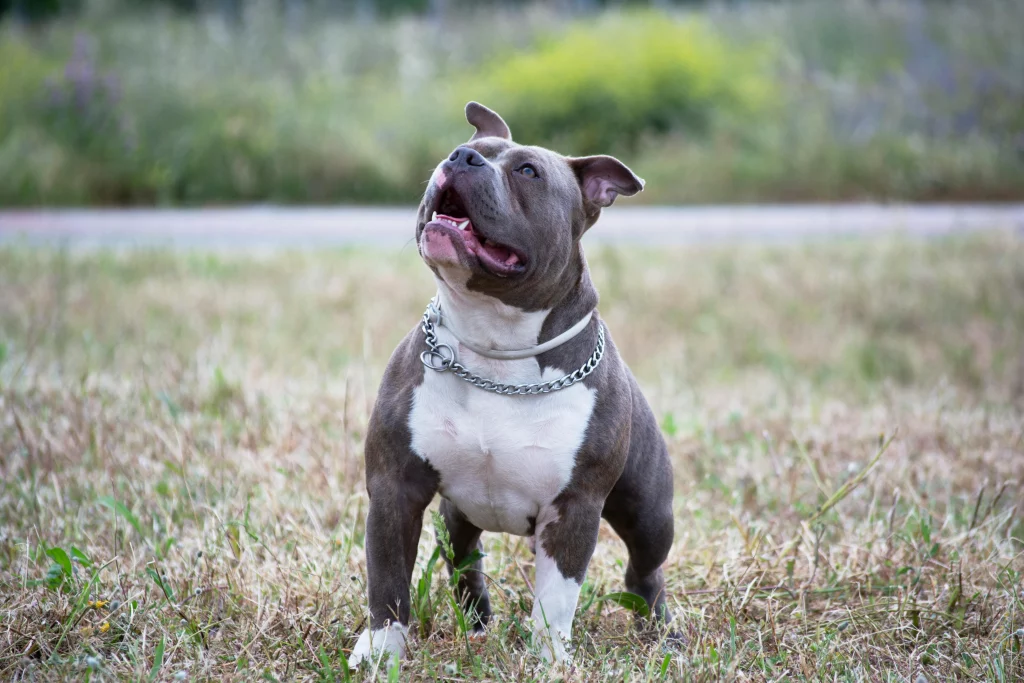The XL Bully Dogs: A Look at Potential Concerns and Responsible Ownership
Contents

The XL Bully dogs, powerful and stocky canines with a distinctive head shape, have experienced a surge in popularity in recent years. However, this newfound popularity has been accompanied by growing concerns regarding the breed’s temperament and potential safety issues. Another thing to ask might be can dogs eat lemon
This blog post delves into the potential concerns associated with XL Bully dogs, explores responsible ownership practices, and aims to provide a balanced perspective for anyone considering welcoming one of these dogs into their home.
Understanding the XL Bully Dog
The XL Bully dog is not officially recognized by any major kennel clubs. It’s a relatively new breed stemming from selective breeding within the American Bully breed. This selective breeding prioritizes an immensely muscular build and an exaggeratedly large head.
Here’s what you need to know about XL Bullies:
- Size and Strength: These dogs are massive, typically weighing between 80-130 pounds (36-59 kg) and standing at 20-23 inches (51-58 cm) tall at the shoulder. Their immense strength necessitates responsible handling, especially around children or smaller animals.
- Health Concerns: The breeding practices used to achieve the XL Bully’s signature look can lead to health problems like Brachycephalic Syndrome, which affects breathing due to shortened airways in the face. Hip dysplasia, joint issues, and skin problems are also common concerns.
- Temperament: While some XL Bullies can be gentle and loving companions, the lack of breed standardization and potential for irresponsible breeding practices can lead to unpredictable temperaments.
Potential Concerns Regarding XL Bully Dogs
The rise in XL Bully ownership has coincided with an increase in reports of dog-related incidents involving the breed. Here’s a breakdown of the potential concerns associated with the breed:
- Increased Risk of Injuries: Their immense size and strength can inflict severe injuries during bites or even during rough play, especially for children or smaller animals.
- Unpredictable Behavior: Inconsistent breeding practices can lead to unpredictable temperaments. These dogs may exhibit aggression towards strangers, other dogs, or even their owners.
- Brachycephalic Syndrome: This health issue can cause difficulty breathing, overheating, and exercise intolerance. This can be dangerous during exertion or hot weather.
It’s important to remember that not all XL Bully dogs are aggressive. However, the inherent concerns associated with their size, strength, and breeding practices necessitate responsible ownership and careful consideration before getting one.
Responsible Ownership of XL Bully Dogs
If you’re considering getting an XL Bully dog, here are some crucial steps to ensure responsible ownership:
- Thorough Research: Learn about the breed’s history, health concerns, and temperament. Talk to experienced owners and breeders to understand the commitment involved.
- Reputable Breeder: Seek an XL Bully breeder who prioritizes health, temperament testing, and responsible breeding practices.
- Early Socialization: Socialize your XL Bully puppy from a young age with other dogs and people. Enroll in puppy training classes to establish good behavior.
- Professional Training: Professional dog training is crucial for an XL Bully. A qualified trainer can teach you how to manage your dog’s strength and establish clear boundaries.
- Management and Leash Laws: Always use a sturdy leash and harness when walking your XL Bully. Explore muzzling options for public spaces, especially if your dog shows any signs of aggression.
- Veterinary Care: Regular veterinary checkups are essential to monitor your dog’s health and identify any potential health concerns related to their breeding.
Remember, owning an XL Bully is a significant commitment. They require experienced owners who can provide the training, socialization, and management necessary for a safe and happy life for both the dog and the community.
Alternatives to XL Bully Dogs
If you’re drawn to the XL Bully’s muscular build but are concerned about the potential concerns, consider these alternatives:
- American Bully: The American Bully, from which XL Bullies are bred, comes in various sizes, with the “Standard” size offering a more manageable option.
- Staffordshire Bull Terrier: The “Staffy” is a smaller, stocky breed known for its loyalty and playful nature.
- American Pit Bull Terrier: Often misunderstood, Pit Bulls can be wonderful companions with proper training and socialization. Responsible breeders prioritize temperament testing within the breed.
Ultimately, the best dog breed for you depends on your lifestyle and experience level. Research different breeds, visit shelters or reputable breeders, and choose a dog that aligns with your ability to provide the care and training they need.
Conclusion
The XL Bully dog is a powerful and visually striking breed. However, potential concerns associated with their size, strength, and breeding practices necessitate responsible ownership. By understanding these concerns, committing to training and socialization, and prioritizing responsible breeding practices, XL